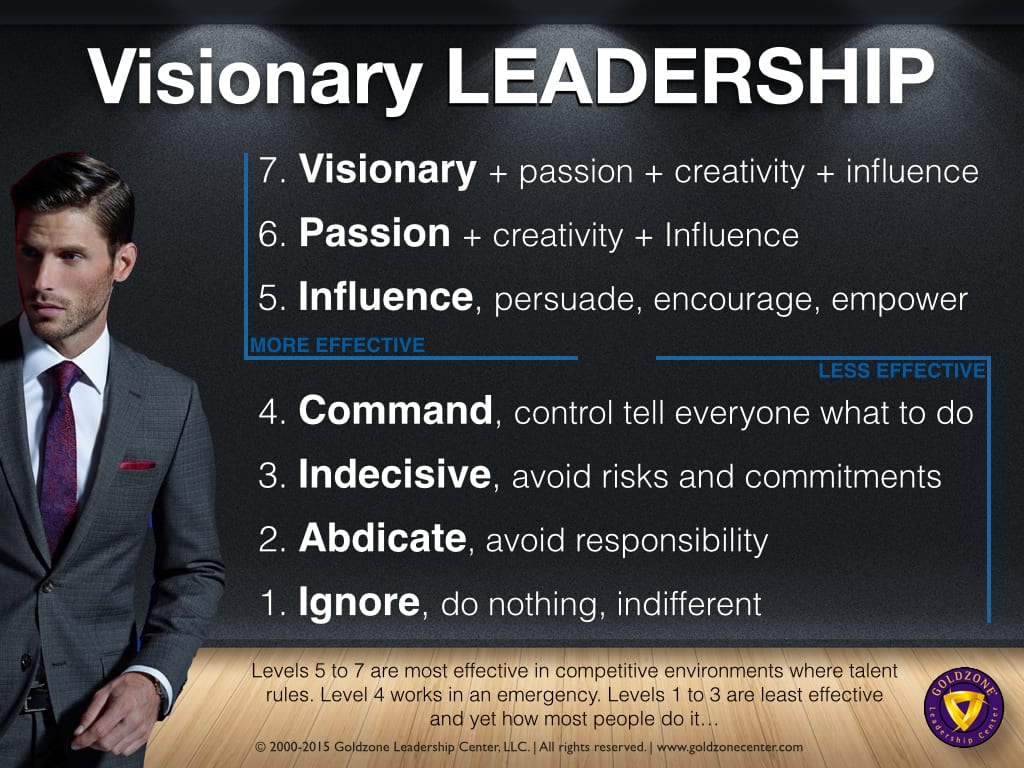When hearing the words “leader or leadership,” most people assume that the reference is to the people at the top – in the power positions with authority. We don’t often think of the managers, supervisors, and team members who make up the organization.
Do you see yourself as a leader? Ask any room full of managers how many are leaders, and you will find that most managers do not see themselves as leaders, and yet, how do you manage without leading?
Leadership is one of the world’s oldest and most widely studied subjects. As prophets, priests, and kings, leaders have long served as symbols, representatives, and models for their people. In modern times athletes, musicians, actors, businessmen, and gurus have replaced the kings of the old.
Leadership is often perceived as elite, hallowed, special, and reserved for the minority of people at the top with “true” power concentrated in their hands. These people dominate the organizations or groups they lead (at least until someone overthrows them and takes their position) through the age-old methods of authority, domination, command, and control.
This leadership style leads to organizational structures that produce results by forcing compliance, adherence to rules, established conventions, and old ways of doing things. Change is seen as a threat – even though it is openly stated that change is required – when it comes to taking action, new ideas and ways of doing things are often met with anything from mild hostility to outright resistance.
The Hands of The Few
This concentration of power “in the hands of the few” may have worked in the past when things remained unchanged for long periods of time, however in today’s world, the pace of change is accelerating exponentially, and we are living in a world where globalization isn’t the stuff of the future – it has already happened! We are more connected to our neighbor countries on the other side of the planet than ever before. There is a free flow of capital, ideas, information, technology, goods, services, and people worldwide. Ferocious competition is breathing down our necks from the most unlikely sources.
This new world requires a new leadership style that is very different from the successful formulas that worked well in the past. This is a counterintuitive, very difficult thing to do… to let go of the things that made us successful in the past. And yet this is exactly what we must do to survive – let alone succeed in the future.
It’s all about power. Who’s got it, and who wants it? It is well known that traditional leadership models are based on gaining and keeping power through establishing a top “position” and then protecting one’s ‘turf.” The thought behind this is that power comes from position, cannot be shared, and that is somehow diminished by sharing. So if a leader has spent a lifetime building, enhancing, and developing their power base, they will not easily empower other people in the organization. Yes, they will talk the language of empowerment – but when it comes to moving the decision-making – the words don’t quite translate into actualities.
This type of power is known as Position Power, which comes from formal authority or the right to command. Results are achieved by Autocracy, coercion, and the extensive use of punishment and reward (if you agree with me, I will reward you. If you don’t agree with me or do what I say, you are punished.)
No longer is economic success dependent on natural resources, manufacturing excellence, and scientific or technological prowess. Today, the terms of success revolve around an organization’s ability to mobilize, attract and retain creative human talent. Every competitive dimension depends on the creativity and ingenuity of the people that make up the organization.
It is impossible to think of new ideas and creative and innovative solutions that defy old ways of doing things if we are afraid of making mistakes and constantly worry about the real or perceived threat from a leadership style based on autocracy, coercion, and punishment. Leading a team of creative talent is very different from leading a factory line of workers who do similar tasks repetitively or service staff who provide functional service. It simply does not work to command creativity! Can you imagine Mozart or Picasso being told to produce or told, “you are out!”
Many of today’s leaders are still operating from this old leadership model. Leadership in the creative environment of the future requires a vastly different paradigm. Today’s new model involves partnership, cooperation, and team. It’s not about abandoning Position Power – it’s about adding, developing, and enhancing every individual in the organization’s Personal Power and working the agenda together in a partnership.
The most significant difference between Position Power and Personal Power is that the former is handed over or given to a person. In contrast, the latter is developed through personal development and improving one’s ability to communicate, influence, and inspire actions from others.
Power is the ability to get someone to do something you
want to be done or the ability to make things happen.
Empowering individuals in the organization means sharing the power with them. Shared power adds up to more power – not less. It means everyone has an increased ability to get more done and to make things happen. This can make a dramatic difference to the organization’s bottom line results. To do this means making everyone a leader.
An organization comprised of leaders adds up to a leading organization.
Andrew John Harrison
Like any skill – Personal Power can be learned and developed by anyone; however, it requires a new leadership context that begins at the top and extends throughout the levels of the organization. It simply doesn’t work to send the people in the organization to training programs, alignment sessions, and educational sessions if the entire organization isn’t sharing the same context. Leading by example means that the context must be shared at all levels (otherwise, you end up with disillusionment, skepticism, and a lack of belief that there is one set of rules for people at the top and another for everyone else.)
It’s about Personal Leadership
For most people, the concept of Personal Leadership is new. It is not simply a case of attending a three-day seminar or reading a book; one is transformed into a new leader! Developing Personal Leadership is a long-term commitment that involves an ongoing education combined with application – all with bottom-line results in mind. This is a substantial investment in time, energy, and money – not just from the organization but every individual. This is why the context of partnership is so important. The individual and the organization are in a long-term partnership for mutual benefit.
If this investment in Personal Leadership is directly connected to bottom-line results that are measurable, significant, and connected to the organization’s vision – any board of directors will approve the investment.
Band-Aids Don’t Work – Long-term!
The challenge for most organizations is that the leadership agenda is inconsistent, and neither is it communicated to the entire organization from top to bottom. The commitment must be backed up by action and a comprehensive Leadership Development Roadmap that everyone can follow to know where they are and where they are going.
If the leadership agenda involves everyone except the leaders at the top who retain the Position Power model – there will be results; however, they are limited compared to what is possible if the entire organization is aligned and all heading in the same direction.
The Need for Speed
Concentrations of power in the hands of a few, bureaucracy and turf-protecting slow everything down to a crawl. With every person in the organization empowered and aligned, cycle times from plan to results are dramatically improved. The speed of change and implementation of new initiatives improves, and results accelerate. The leadership agenda is mission-critical and cannot be left to the HR and Training Departments alone – it must have the attention and commitment to resources required to succeed.
To change things that have worked for us in the past – before they stop working is the essence of visionary leadership. The key to becoming or staying competitive globally is to transform our fundamental leadership concept and live, eat and sleep Personal Leadership at all levels of the organization.
The Goldzone Leadership Curriculum offers comprehensive, custom Leadership Development Roadmaps. Using the revolutionary New-Paradigm Leadership Model, participants master more effective tools, strategies and methods compared to the old style and traditional leadership models. High stress and low performance are transformed into optimum personal and organizational performance.
If you are ready to have a different kind of life, then it is urgent
you infuse your leadership with aliveness and passion…
Ignite Your PASSION!
The GOLDZONE Experience is now available. It’s an unforgettable 3-day experience that can help you join a unique group of gifted leaders and master teachers who are living their dream visions, lives, and careers and who are now eager to help you do the same. Learn more > here
Give Yourself a Quantum Leap!
Act Today to Register Your Place at the next
GOLDZONE Experience by Calling
+1-888-995-2188 or fax +1-888-995-2189
To register online > click here
Leadership Advocate and Co-Founder of the Goldzone Group. I help leaders to master the new rules of leadership for the new economy. Over the past 30 years, I have visited more than 500 cities in 54 countries to explore, learn from, and help many of the world’s leading companies, leaders, and luminaries in science, technology, health, finance, and entrepreneurship.





